|
So, friends, do you know what you’re doing on March 12 of next year?
Let me tell you. You’re going to get a package on your doorstep. And you remember, “Oh, yes, today is the day my pre-ordered book comes! Faith Elizabeth Hough loved this one so much I just couldn’t resist the chance to have it the day it comes out.” You tear open the packaging, and pull it out. The Funeral Ladies of Ellerie County, by Claire Swinarski. It is gorgeous. “Just as beautiful as Faith said it was!” you think. But you’re a smart, experienced reader, so you won’t be swayed by something so superficial as a gorgeous cover. (You’re totally swayed, but your secret is safe with me.) So you think, “I’ll just read a page or two to see if it’s as good as she said. Then I’ll make a cup of tea and really settle in.” You open the cover and slip into the world of Ellerie County, Wisconsin, a place where the winters are snowy and cozy and the sumers are spent on the docks and the people come together to help one another through thick and through thin. A place so vivid it’s almost a character in its own right. But the characters! The characters are even better. There’s Esther, who reminds you a bit of your own grandmother, with her steadfast faith and the perfect pies and casseroles she whips up with her “Funeral Lady” friends for each and every funeral at the town’s little Catholic church. There’s Iris, her granddaughter, who is thoroughly modern with her Instagram savvy and her business plans, but who also is happy to fill in for her mom’s hour of Eucharistic Adoration every week. You get excited right along with them when Ivan Welsh, the Food Network celebrity chef, arrives in town for a funeral, along with his sassy teenage daughter and kind but haunted son, Cooper. At this point you realize you’ve made some good choices in your life, because somehow a cup of tea has appeared in your hand and you don’t even remember how it got there. (You’ll thank them later.) You enjoy each sip, even while wondering what that chai would taste like with a hint more cardamom, or perhaps accompanied by a slice of apple pie. But you can’t dwell on it long, because Esther's kind heart got her in trouble, and Iris has a plan to help, but it’s kinda crazy and she might be falling in love with Cooper, and he’s got issues to deal with and what’s going on with Ivan, anyway, and can Esther’s good heart and perfect pie crust really save the day? Somewhere mid-description of a gorgeous culinary creation by either a midwest grandmother or a Food Network celebrity, you realize you probably should eat something (and, for some of you, make a meal for those wonderful little humans that have been uncharacteristically self-directed in their play or schooling all day). You prepare the meal with exquisite attention to each detail, because your reading has reminded you that the little details matter and that food is a pretty darn good way to show love. After your meal, you’re dying to get back to the book—but you pause. Because it’s also made you think a little more carefully about the time you spend with those little humans or other people around you. You muse, “If I take anything away from this book, it’s going to be that we have to be there for one another. We have to love and we have to forgive, but first we just have to show up. With a casserole or a book to read or arms open for a hug.” So you choose the right thing, and you hug your humans, and you just might slip into bed and read under the cover until you turn the very last page. Sometime around March 13, you order a few extra copies, because The Funeral Ladies of Ellerie County is the perfect choice for your brilliant idea of a three-generational-book club with your grandma and mom and sisters. While you’re on the computer, you think, “I should send a quick note to thank Faith for convincing me to click on that pre-order link back in September. What a difference it made!” But instead you remember what Faith said, and you send a quick email off to the author, Claire Swinarski, thanking her for the time and energy and heart she put into writing such a beautiful book. Because imagine what a bleak March 12 it would have been without the chance to lose yourself in a perfect pie and a midwest town and your new favorite story. Besides, Faith might be busy re-reading her shiny new copy, if she's not making a pie.
2 Comments
I'm sure I wasn't the only one to do a little happy dance in my mind when I found out there's a new book coming out in September from Kate Albus, author of A Place to Hang the Moon. Any of you fellow happy dancers? Kate's debut novel completely stole my heart and won an honored place on my shelf, so I couldn't wait to see what she'd write next!
Like A Place to Hang the Moon, Kate's second book is set during the Second World War, but Nothing Else But Miracles takes place on the other side of the pond, in Manhattan's Lower East Side. Twelve-year-old Dory Byrne and her brothers Fisher and Pike have to fend for themselves while their young father is fighting overseas. They rely, as their father told them to, on their neighborhood—their community in Manhattan that has always been there for them. But when their friendly landlord suddenly dies, their security is threatened. Luckily the neighborhood steps up in an unexpected way—Dory discovers an old, abandoned hotel, accessed only through a rickety hand-operated elevator, above their friend's restaurant. Hiding away there provides them the secrecy and safety they need when their father goes missing—all the while their neighbors continue to provide them with the love and help they didn't even know they needed. Did I really have to say more than "old, abandoned hotel" for you to know I'm obsessed about this story? I mean, HOW COOL IS THAT? (And it's based on a real place!) Add it to my list with Bag End, the Metropolitan Museum of Art, and the Boxcar Children's boxcar, of "places books convinced me I want to live." But beyond the evocative setting, Dory's story has a heart as big as the Big Apple itself. Her struggle to find safety in insecure times, to choose love over resentment, and to cling to hope when all seems lost are what make Nothing Else But Miracles a truly excellent book, and one that you'll want to share with everyone you know. Nothing Else But Miracles releases September 5—trust me, you want to preorder it now so you can read it as soon as possible. Many thanks to Netgalley and Holiday House for providing me an electronic review copy in exchange for my honest opinion. For more Marvelous Middle Grade Monday recommendations, check out Always in the Middle! Book to Share: Hope in the Valley, by Mitali Perkins (My final read for Vintage Kidlit Summer!)8/18/2023 It’s not every day that one of my all-time favorite, overlooked classics of a book is mentioned in a new middle grade novel. When Pandita Paul, the main character of Hope in the Valley, by Mitali Perkins, discusses Maud Hart Lovelace’s Emily of Deep Valley with the elderly man she has befriended at an assisted living facility, my little readerly heart squealed.
But it’s REALLY not every day that a new middle grade novel actually reminds me of one of my all-time favorite, overlooked classics of a book. Throughout Mitali Perkin’s story—from the title on out—little nods to Emily of Deep Valley come out in theme and words and style. Most noticeably, Pandita’s growth into a young woman who is confident enough both to speak her mind and to change her mind (and isn’t that the harder of the two?), echoes Emily’s growth in Lovelace’s novel. Is it a retelling? Not in the least. Will Emily’s fans rejoice to find a modern book full of the same heart and strength and old-fashioned goodness? Absolutely. Here’s the publisher’s description: Twelve-year-old Indian-American Pandita Paul doesn't like change. She's not ready to start middle school and leave the comforts of childhood behind. Most of all, Pandita doesn't want to feel like she's leaving her mother, who died a few years ago, behind. After a falling out with her best friend, Pandita is planning to spend most of her summer break reading and writing in her favorite secret the abandoned but majestic mansion across the street. But then the unthinkable happens. The town announces that the old home will be bulldozed in favor of new―maybe affordable―housing. With her family on opposing sides of the issue, Pandita must find her voice―and the strength to move on―in order to give her community hope. “Activism” is a charged word right now. Everywhere I look, it seems like someone is picking a fight in the name of “activism” instead of learning to sit down with their neighbor and see their point of view. Sometimes it seems like a very modern idea, but old books from Emily of Deep Valley to Rose in Bloom—not to mention everything Dickens ever wrote—remind us that activism is a necessary part of grappling with the injustice that has existed in the world since the fall of man. Just like those old stories, Hope in the Valley is about a young woman who wants to make the world a little better, who sees a wrong and is compelled to leave her comfort zone in order to right it. But her activism is a far cry from screaming protests and hard-headed insistence. In fact, it’s the time that Pandita spends with people who disagree with her that most influences and informs the way she makes her case. Any of us who have struggled with how to stand up against the evil in the world without adding to it will be inspired by the example she sets for us. Auntie Mitali, thank you. You’ve written the classic story we need in 2023 and for generations to come. (Note: I happened to read this during my last week of the Vintage Kidlit Summer reading challenge that Anna Rose Johnson and I are hosting. I didn't realize when I started how perfectly it would fit into the week's theme: A New Book with a Vintage Feel! I'll have a recap of my summer reading very soon, but in the meantime, find this lovely book!) I remember the first time I cracked open The Lion, the Witch, and the Wardrobe—I was ten or so, I think? Like the Pevensy children, I fell right into the world of Narnia and never looked back. I didn’t need to get used to the world or think too hard about justifying the magical system. I just lived and breathed the story. For me, any good fantasy story must have that same element of naturalness. If I can’t fall right into it, it’s probably not the fantasy story for me.
That feeling of naturalness is the first thing that struck me (when I stopped to think about it, which I didn’t right away because the story was so compelling) about Emma C. Fox’s soon-to-be-released The Carver and the Queen. The story follows Petr, an orphaned Russian serf who longs to become a renowned and succesful carver of malachite, and Lena, the housemaid to Petr’s teacher who likewise dreams of better things, particularly things better than the arranged marriage to the town’s cruel bailiff. In the process of chasing his dream and his chance to win his and Lena’s freedom, Petr falls into league with Malachanitsa, a cunning sorceress, queen of the underground malachite kingdom. The limited magical elements (no keeping track of complicated systems here!) and battles between gain and selflessness, good versus evil—and of course the alluring evil queen—kept up the Narnia vibes throughout the entire story. It also reminded me, in its fantasy/historical setting and lyrical prose, of Shannon Hale’s early works, particularly The Goose Girl and the other Books of Bayern. It would probably appeal most to readers of the same age as those books as well—advanced 11-year-old readers through teens (and adults, as well!). The Carver and the Queen releases October 3, but you can preorder it now. Many thanks to Owl’s Nest Publishers for the review copy of this book—my delighted opinions are entirely my own. It's a three-for-the-price of one day here, as you get three weeks of vintage reading recommendations all at once! (To learn more about the Vintage Summer Reading challenge that Anna Rose Johnson and I are hosting, click here.) First up, for the "Big Family" theme: Canadian Summer, Hilda Van Stockum. I think I mentioned that I had planned to read one of the All-of-a-Kind Family stories for this category, but I have a bit of a problem in my house where my avid reader children steal my books. It's a good problem to have. Maybe it's one Hilda Van Stockum might have had, as she had six children herself. Those children inspired her many beautiful books, especially her series, The Mitchells, of which Canadian Summer is the second of three books. Of course, as a mama of a large family, my reading of this series zeroes in a bit on Mrs. Mitchell, the wonderfully realistic and yet wonderfully warm and understanding mother of the crew. I think my goal in life is to be Mrs. Mitchell. She takes the mud and the mess and the quarreling and near-death-escapes of her crew in stride (for the most part—as I said, she's wonderfully realistic and she has her moments of fury and panic!). Her understanding brings out the best in each of her children. She may rail against her family's living situation at the beginning of the story (a cabin in remote Canada! with no electricity! or paved roads! or nearby grocery stores! or railings to keep the baby from plummeting off the porch!) but she quickly resigns herself to the situation and joins her children in making what seems less-than-ideal actually become an opportunity for growth and peace and fun. I dare you to read this and not want to rent a remote Canadian cottage for the summer. Call my petty, but my favorite scene is when the six children are stuck at home all day during a thunderstorm and get into a raging, screaming, name-calling brawl. It was a good reminder that even delightful fictional families are at their worst when they can't get outside and run around. For Week 8's theme of Talking Animals, I chose an obscure title by Robert Lawson: Mr. Wilmer. William Wilmer is an accountant at an insurance company who hates his life and his job…until one day he discovers he has the power to talk to animals. What follows throws story-telling rules to the wind. Because pretty much one good thing after another happens until almost the end of the story when a small (but crucial) conflict is cleared up in a single chapter. And yet I was still at the edge of my seat the entire time…because I just wanted to know what the next good thing would be! It's a rags to riches story that would have made a perfect Gary Cooper movie back in the day. And the illustrations! Robert Lawson was amazing. In Week 9 we decided to dive into Vintage Picture Books. To coincide with a quick family trip to Boston, I had to choose Robert McCloskey's masterpiece, Make Way for Ducklings. If you haven't read it… it follows Mr and Mrs Mallard and then their eight little ducklings as they look for a place to raise a family, eventually landing upon (literally) the Boston Public Gardens. It's adorable and timeless. And because I love discussing these things, here's a little bit of my recent instagram post about this week's reading, in case you're not on that platform… I'd like to know what you think about this topic!
*** I have a great story about Make Way for Ducklings. When I was doing student teaching for a pre-school class in college, I planned a story time and craft based around this book. The classroom teacher had reservations. "The kids probably won't be into a book so old," she said. "And the illustrations probably won't engage them much, seeing as they're black and white. I mean, you can TRY, but..." The sentence faded away into ominous obscurity. You guys are my people, so probably none of you are surprised to find out that this group of a dozen three and four year olds absolutely loved this old, black and white (I mean, sepia and white, to be accurate) story. They hung on every word. They played ducklings for the rest of the school year. They told me how the way the mallards had to find a new home made them think of when their parents bought a new house. I think some people have a tendency to write off old books just because they're old. Surely kids won't like them as much as the ones that are shiny and new, right? On the other hand, some people tend to write off new books, because they're afraid the shiny newness can't possibly be as good as the old, tried-and-true goodness. Old books aren't inherently good or bad because they're old. New books aren't inherently good or bad because they're new. You can find goodness, truth, and beauty in both. And you SHOULD. If we stop reading old books (and checking them out from the library), they'll fade into obscurity and we'll lose that beauty, those good stories and profound lessons. If we stop reading good new books, artists trying desperately to share the stories and art and ideas that God placed on their hearts won't be able to live that mission. That's why I care so deeply about sharing good books, old AND new, with my children and with all of you. A hidden bonus of being a Catholic author is that I've spent my life steeped in story-worthy elements. You want beauty and drama? Walk into a Mass and breathe in the incense and beeswax candles. Let the music of Byrd and Tallis echo in your ears. See the gleam of brass in the smoking thurifer and the sheen of silk on the tabernacle and vestments. You want the perfect story? Read the Bible, with all its heartache and betrayal and sacrifice and longing and love. Or the lives of the saints, echoing this story in their own unique lives.
But the downside to being a Catholic author? It can get annoying when non-Catholic authors steal from the treasure box of Catholic imagery and items. When they do it well, I don't mind so much (I loved The Inquisitor's Tale, for example…even though it did say Dominicans wore brown...). But when they do it poorly and the book wins acclaim, it's honestly painful. A recent award-winning title by a truly brilliant author missed the mark so much on angels and religious life (to a Catholic, "religious life" means living as a nun, sister, priest, brother, or monk) that I was honestly astounded by its stellar reception. Didn't it matter to anyone else that sacred elements of our Faith were being appropriated to add drama and mystique to a story? Last week I read Back to the Bright Before, by Katherin Nolte--a newly-released story that very much takes advantage of the "Catholic mystique," but also very much gets it right. I am assuming that the Nolte is Catholic or was at some point, because she not only uses Catholic elements carefully and respectfully, but she never lets them get in the way of a really well-told story. It would have been easy to point out much of her symbolism to her readers, but instead she leaves it there like a little Easter egg for her readers to notice or not notice—you don't need to know all the answers because what you're there for is the story. Here's a description from the publisher: When eleven-year-old Pet Martin's dad falls from a ladder on their family farm, it isn't just his body that crashes to the ground. So does every hope her family had for the future. Money is scarce, and Pet's mom is bone-tired from waiting tables at the local diner, and even with the extra hours, it's not enough for a third surgery for Pet's dad. Her five-year-old brother, Simon, now refuses to say anything except the word "cheese." Worst of all? The ladder accident was Pet's fault. She's determined to fix things--but how? Good old-fashioned grit...and maybe a little bit of magic. When a neighbor recites a poem about an ancient coin hidden somewhere on the grounds of the local abbey, Pet forms a plan. With her brother, a borrowed chicken, and a stolen pony, Pet runs away from home. If she can find the coin, Daddy can have his surgery, Momma can stop her constant working, and Simon might speak again. But Pet isn't the only one who wants the coin...which means searching for it is more dangerous than she ever imagined. This dazzling debut novel filled with magic, family, and adventure is sure to be an instant classic. Here's the thing. This book will be classified as magical realism, but to a Catholic reader, it will read as something even better: a story of miracles. As Pet learns in the story and I have learned in my life, miracles are all around but you'll miss them if you're not looking. How wonderful it was to read a story where faith moved mountains and hope overcame the darkest evil! If you want to see it as magic… that's ok. Maybe we can agree it's the "Old Magic" of Narnia and The Secret Garden, a power bigger than the powers of this world, bigger than evil and bigger than even our biggest problems. On a final note—and I know I can't really work this in with a perfect segue—the NUNS ARE SO GREAT. Having lived across the street from a Dominican monastery for several years, and knowing many nuns and sisters very well, I do get prickly when they're portrayed in literature as socially-awkward mystics or repressed goody-two-shoes. Nuns are real people, guys. :) Every single one I've met has entered religious life because she feels called to something bigger and deeper than herself—she is running to a great love, not running away from the world. And that deep love and complete normality was perfectly portrayed in Back to the Bright Before. Sister Melanie, the novice sister who befriends Pet, is just like many young nuns I know: kind and funny and nerdy and normal. I just loved her. For more Marvelous Middle Grade Monday recommendations, check out Always in the Middle! Vintage Summer Reading, Part 6: The Magic Summer, by Noel Streatfeild (UK title: The Growing Summer)7/6/2023 Welcome to Part 6 of A Vintage Kidlit Summer, the summer challenge hosted by me and Anna Rose Johnson. We've been having so much fun re-discovering childhood favorites, exploring new-to-us vintage stories, and connecting with other vintage-loving friends! For more about the challenge, and to see the schedule and our recommendations (you're welcome to join in anytime, even for just a week!), see this previous post. This past week's theme was "Well-known Author, Little-known Book," and once again I took Anna Rose's recommendation—for the win. ;) I'd read several Streatfeild books as a child and as an adult, and I'd even had this one on my shelf for several years after finding it at a library book sale. My first surprise upon opening this book was this lovely dedication. Elizabeth Enright is one of my very favorite authors, so even if I didn't already love Noel Streatfeild, I think this would have tipped me in her favor. It's like discovering a mutual best friend, isn't it?
Just a few pages in, I remembered what a masterful storyteller Streatfield is. Her characters jump off the page, and her depiction of the relationships between the four siblings is spot on. How did such a prolific author manage to create new, unique, believable characters in every story? If you know Streatfield from Ballet Shoes and its "companion" books, the description of The Magic Summer might surprise you a little. When their doctor/researcher father is taken ill on an overseas research trip, four siblings are sent to live with their eccentric great-Aunt Dymphna on the coast of Ireland (hooray for another children-by-the-sea story!). Aunt Dymphna quotes poetry at every turn and is a master at rummage sales, herb-lore, and lobster-catching. She is not quite as skilled at things like keeping house, driving a car, or raising children. The children are nearly left to fend for themselves, with hilarious consequences. They also come upon a mysterious boy hiding in their aunt's old mansion, providing a mysterious side story—and another excellently-crafted character. I'm not sure why the U.S. title is The Magic Summer--there are no fantasy elements in this story, unless you count Aunt Dymphna's unaccountable talent for conversing with seagulls. The U.K. title, The Growing Summer, seems much more apt. Throughout the course of the summer, the challenges and mysteries and fun the children experience lead them to grow in ways they never would have expected. Children today, who can hardly fathom a world where a helpful adult is not a mere text message away, will likely be enthralled by the children's freedom and mastery. What's your favorite little-known book by a well-known author? Did you join in this week's challenge? Next week we're jumping into vintage "Big Family Stories," and I have an All-of-a-Kind Family sequel I can't wait to crack open! We've arrived at Week 2 in our Vintage Kidlit Summer Reading reviews! (You can learn more about this summer reading challenge that Anna Rose Johnson and I are hosting in this post.) This week's theme is Moody & Mysterious, and I again chose to read Anna Rose's recommendation: Mystery on Heron Shoals Island, by Augusta Huiell Seaman, originally published in 1940.
Here's the publisher's description: Fifteen-year-old Marty, her grandmother, and their macaw, Methuselah, live in a big old family house on Heron Shoals Island. When they’re asked to board a young musical prodigy, his father, and his professor for the next couple of months, Marty senses disaster on the horizon. The group soon becomes friends, though, as they find themselves working together to solve a thrilling and complicated mystery. If they can solve it, life at the old home on Heron Shoals Island will never be the same again. Guys, I LOVE island stories. This makes two in a row, and I could easily just specialize in kids-on-an-island stories this entire summer. This one was very different from last week's lighthearted family story. The suspense and danger were real, but they never got too intense. (I'd have no issue handing this to a young, precocious reader.) The mystery itself was slightly predictable to me (I mean, I'm a writer, so it's hard to surprise me with a plot!), but very engaging and complete with a satisfying ending. My favorite part, though, was the description of the hurricane that takes place at the climax of the book. I'd heard stories from grandparents and elderly friends of the Great New England Hurricane of 1938—clearly that was the inspiration for the terrifying storm in this story. Every summer during hurricane season, the weather channels here in CT pull up the old photos and first-hand accounts, so it was easy to visualize exactly what Seaman describes in her story. And of course placing it within a story made the storm come so much more to life! This week we're diving into some light fantasy with "Magical Adventures." I'm already delving into an old favorite, Half Magic, by Edward Eager. Are you joining us this week? I'm also linking up today with Greg Partridge for Marvelous Middle Grade Monday—for some more current MG recommendations, be sure to check out his blog! Welcome to Edition 1 of 12 in my Vintage Kidlit Summer Reading reviews! (You can learn more about this summer reading challenge that Anna Rose Johnson and I are hosting in this post.) This week's theme is Summer Vibes—it was NOT easy to choose just one vintage book for this theme (and I may have cheated—overachieved?--a little by reading other summer stories with my kids. But today I'm spotlighting my official read and new discovery: Seacrow Island, by Astrid Lindgren of Pippi Longstocking fame.
Don't get me wrong: I enjoy Pippi very much. But I can't understand how so much of Astrid Lindgren's reputation seems to rest on that one character. If you haven't read Ronja, the Robber's Daughter or The Children of Noisy Village, for example, you're missing out on much of Lindgren's humorous and emotional depth and breadth. Seacrow Island took me in a very different direction, but no less delightful, as it's a story that was contemporary when Lindgren wrote it, and solidly in the realm of realism. The mention of blue jeans and polo-neck sweaters and motor boats made me forget temporarily that I was in a Lindgren novel—until the humor hit. And Seacrow Island really is one of the funniest realistic fiction stories I've ever read. Some of that humor is situational, but for the most part, it's all about the people. Much like Jane Austen or L. M. Montgomery, Astrid Lindgren has the ability to write characters that make you laugh out loud while still being essentially human and deeply real. We laugh at them, but we never mock them—perhaps because we see in them a bit of ourselves or of someone we love. Seacrow Island is inhabited by a cast of intensely lovable and mostly humorous human beings—with a few animals thrown in for good measure (I have never had such a warm feeling toward wasps as I did when reading this!). At the center of the action is the Melkerson family: Melker, the dreamy and ever-so-slightly pompous-in-a-lovable-way writer; Malin, Melker's oldest daughter, who at nineteen is the mother figure for her motherless brothers and the irresistible love interest for any nearby young men; Niklas and Johan, the 11- and 12-year-old adventuresome and trouble-making brothers; and Pelle, the 7-year-old, tenderhearted baby of the family. When the Melkersons rent a tumbledown house on Seacrow Island for the summer, the children are quickly befriended by the locals, particularly Tjorven, the six-year-old "queen of the island," who has the entire population wrapped around her chubby and charming finger. There is little intense drama in the story, and yet I found myself unable to put it down. The everyday drama of forming friendships and falling in love and fearing change and wanting a pet—all these familiar situations were so adeptly crafted that they held my attention with the magnetism of a thriller. Besides the characters, Seacrow Island itself was such a well-drawn and delightful setting, I wanted to book a plane to Sweden before I'd turned the last page. Thank you so much, Anna Rose, for recommending this book! Now, friends, what have you been reading? If you've joined in the Vintage Kidlit Summer, please share! I'd love to read your own book recommendations; if you've highlighted one for this week's theme, please leave a link in the comments—or use the comments section to share a one or two sentence spotlight here. :) As a treat for my kindred spirits, I'll be giving away a paperback copy of one of my vintage favorites. Just leave a comment here about what you've read, or share on instagram with the hashtag #vintagekidlit summer (and, if possible, tag me and Anna Rose in your post @faithhough42 and @annarosewriter). I'll choose a winner on Wednesday 6/7, and can mail a copy within the United States. Good luck! "As to moral courage, I have very rarely met with the two o'clock in the morning kind. I mean unprepared courage, that which is necessary on an unexpected occasion, and which, in spite of the most unforeseen events, leaves full freedom of judgement and decision." -Napoleon Bonaparte Ah, two o'clock in the morning. We're old friends now. When I was young, and my first baby was born, I delighted in her midnight murmurings which meant I could wake up and stare at the astounding perfection of her features. A few years into mothering, with a backlog of missed sleep, it did indeed require a certain moral courage. Luckily, by that point, I lived directly across the street from a Dominican monastery, where women of all ages awoke to pray throughout the night, without the alluring reward of baby snuggles. They were summoned by a bell and I by a baby's cry, but it was comforting to unite my own drowsy prayers with theirs on the mornings when my eyes simply didn't want to open. "O God, come to my assistance," I would pray (and still do), "Lord, make haste to help me." In subsequent years, I've come to have a true appreciation for these early mornings of nursing and wakefulness. I wish I could say I always open my eyes with joy and alacrity every time… I don't. I'm middle aged now, and energy is in short supply. But once I do rustle up some motivation, I genuinely enjoy being awake while the rest of the household sleeps. I am glad for the time to speak and listen quietly with God. When I finish prayer, I enjoy reaching for a book (or my kindle, thanks to its backlit screen) and diving into stories while the baby nurses. It's another kind of two o'clock courage, I suppose, to open a book instead of scroll on a phone. A few weeks ago, a friend asked my favorite question: "Do you have any books to recommend?" She needed some reading recommendations for her own two a.m. nursing sessions, and I was most happy to oblige. Since then, I've put some extra thought into this question… What makes for the best early morning reading during the early months of motherhood? Not just any book will suffice. It needs to be engaging, certainly, but also not require too much deep thinking. (I love a good, philosophical treatise…but not at two a.m.) For me, it can't deal with any terribly stressing topics--no child abductions or violent, traumatic deaths on this list. At that time of day, I tend to prefer character-centric works over plot-centric ones (although there are exceptions), but the pacing needs to skip along just as well as if it were a thriller. Without further ado, then, my list of Best Books for Two O'Clock Nursing Sessions—or anytime you need some good, lighthearted, and brilliant stories in your life. The Blue Castle is L. M. Montgomery's only "adult" novel—its main character is twenty-nine and there a couple more mature themes than her other books. It's funny and clever and heartwarming, and one of my two favorite books ever. The Guernsey Literary and Potato Peel Pie Society. Excellent historical fiction that will definitely make you want to plan a trip to Guernsey. While you're daydreaming about Guernsey… Green Dolphin Street, by Elizabeth Goudge, brings the nineteenth century version of the island to life in a thought-provoking and challenging book about the sisters and the power of the presence of God and the decision to love. Daddy-Long-Legs, by Jean Webster, may technically be categorized as a children's or YA book, but its sweet romance, low stress, and epistolary style makes it a go-to recommendation for me to give anyone at all. And if you love Daddy-Long-Legs, you should definitely give Katherine Ray's Dear Mr. Knightley a read! Her books (that I've read so far) are all delightful, with at least a touch of literary influence for you book nerds like me. A recent (and wonderful) discovery for me was the writing of D. E. Stevenson. Her Miss Buncle's Book trilogy is lighthearted and hilarious, while still being very intelligent. I found the whole series, but the third book in general, full of sound advice for a good marriage. Bonus! Maybe it's living in New England, but I will always love a good Revolutionary War story, and In Pieces, by Rhonda Ortiz fits that bill to a T. Romance, intrigue, beautiful dresses (the main character is a seamstress, and the descriptions are rich and historically accurate), philosophy, faith… This book has it all. A Countess Below Stairs, by Eva Ibbotson is the perfect lighthearted read for those of you who binged Downton Abbey. I love every word I've ever read by P. G. Wodehouse, but Lord Emsworth and Others is my favorite nighttime reading collection of his stories. I consider "A Crime Wave at Blandings" to be a perfect short story. There are moments in my nights when my prayers are less like peaceful meditations and more like anxious raging. In those moments, I find the stories of The Little World of Don Camillo, by Giovanni Guareschi, particularly comforting. Even better than their steady humor is the beautiful relationship between God and the character Don Camillo portrayed in these stories. God is tender and patient and ready with a witty answer when needed. Don Camillo is imperfect but sincere. It's so good.
Are there any books you'd add to this list? What gets you through wakeful seasons of life with peace and poise—or at least general sanity? |
About meHi! I'm Faith. I blog about books and creativity, family and faith. Welcome! Archives
November 2023
Categories
All
|
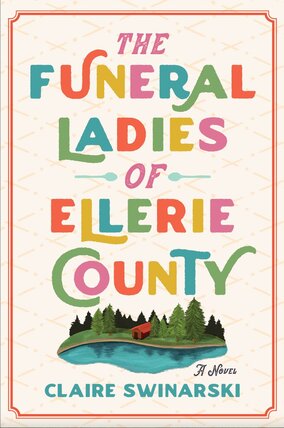
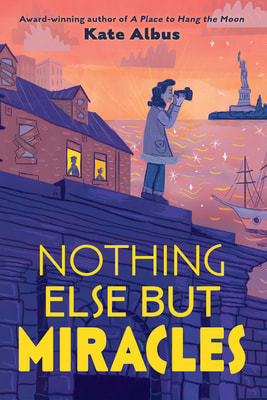
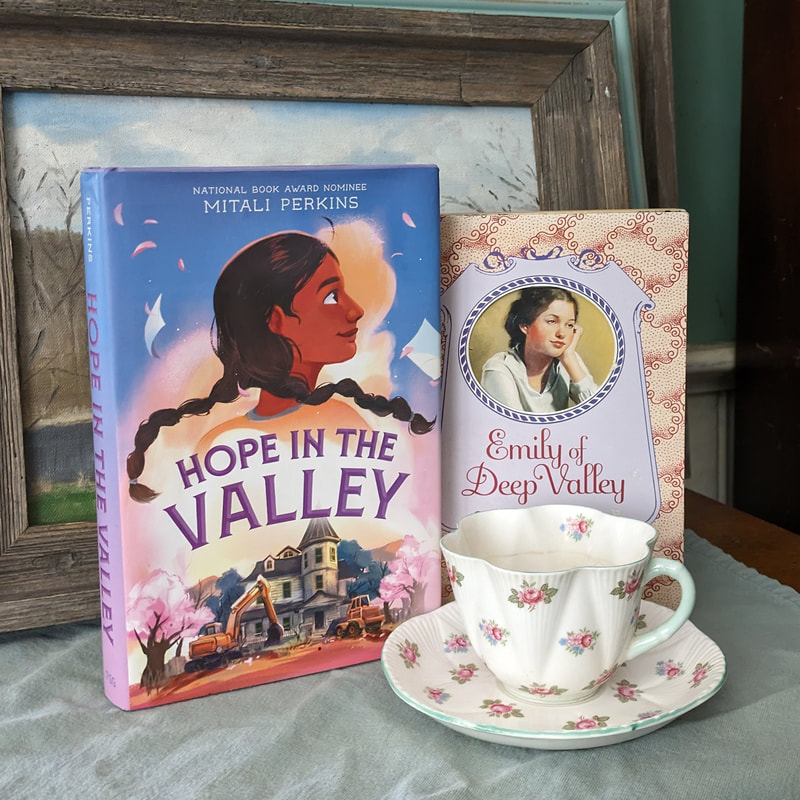
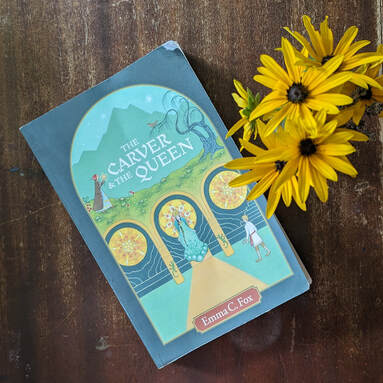
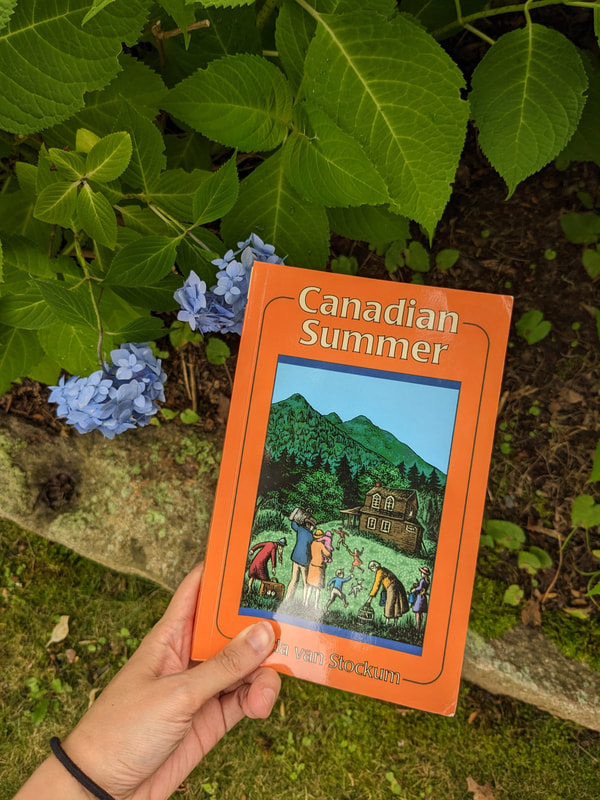
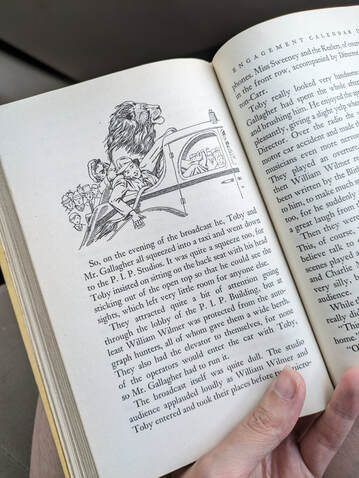
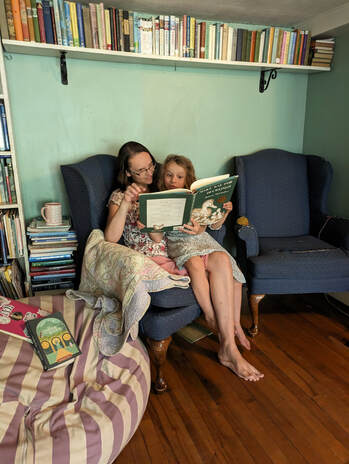

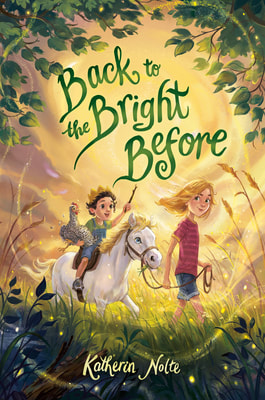
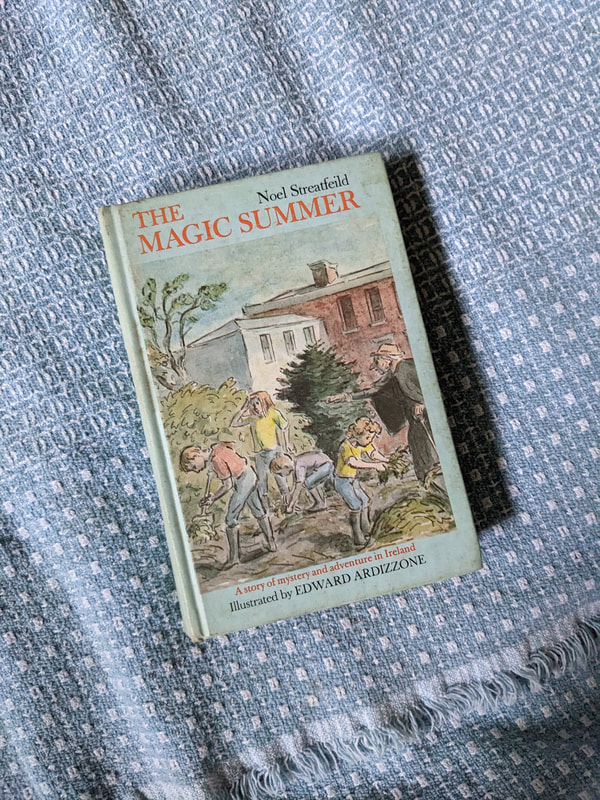
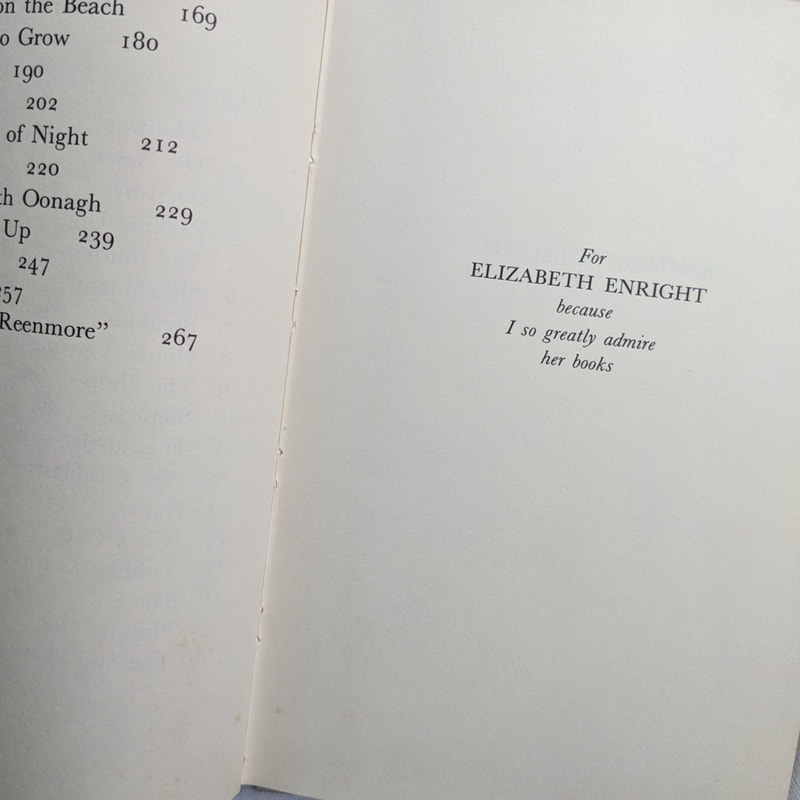
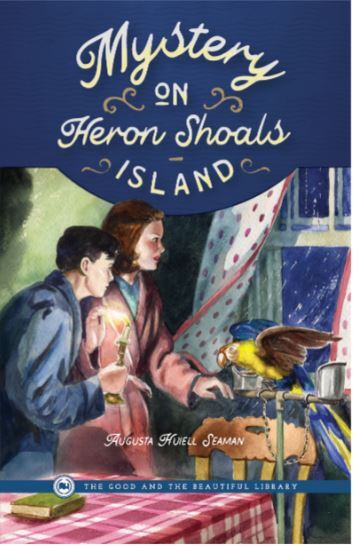
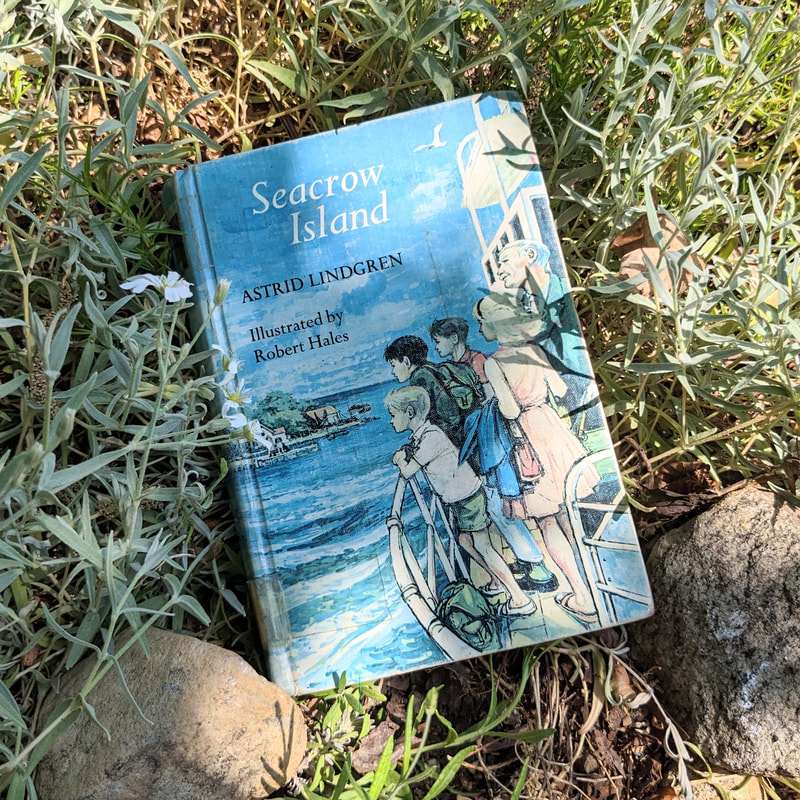
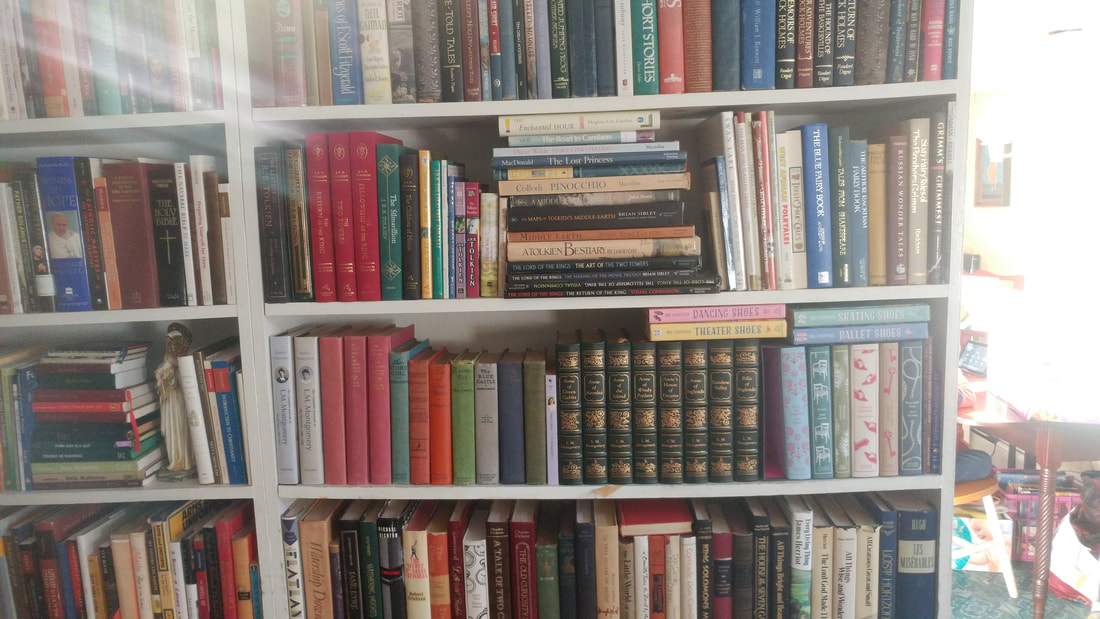
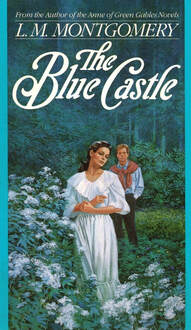
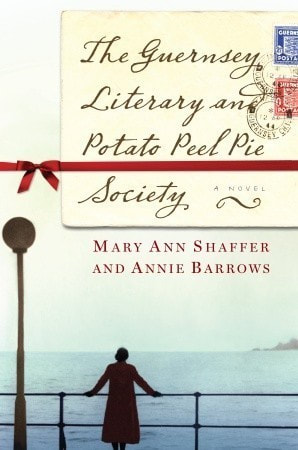
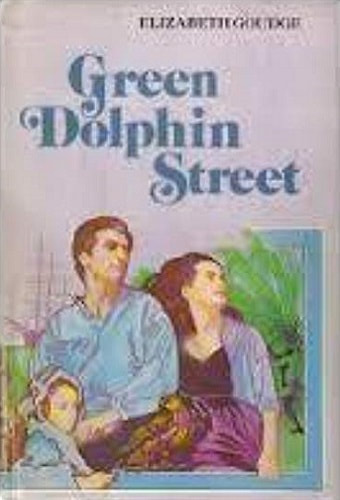
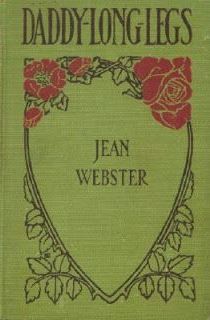
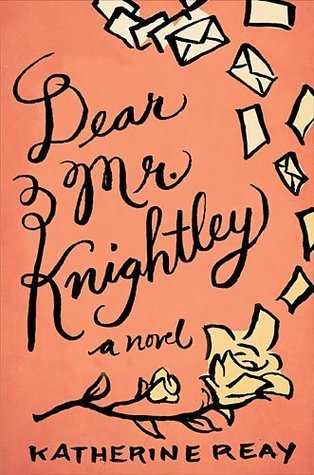

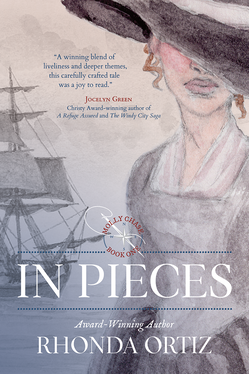
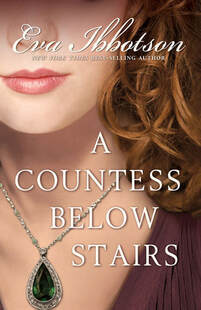
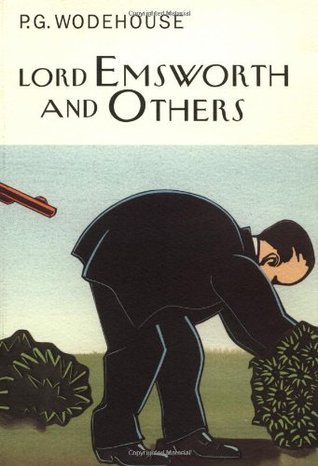

 RSS Feed
RSS Feed